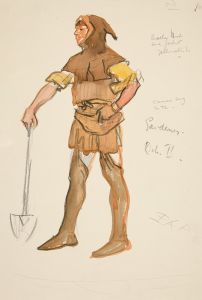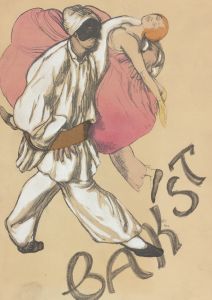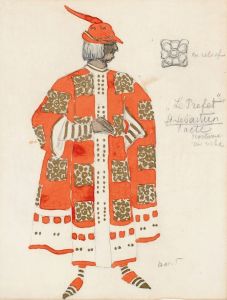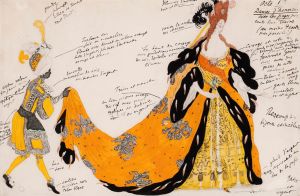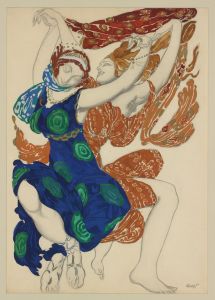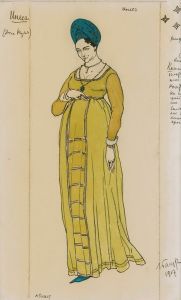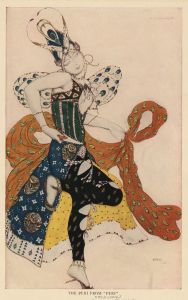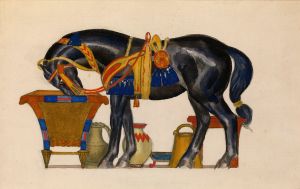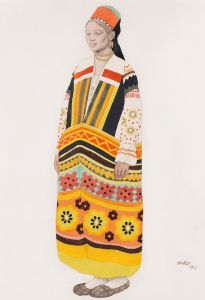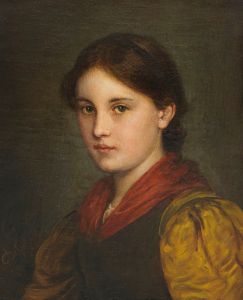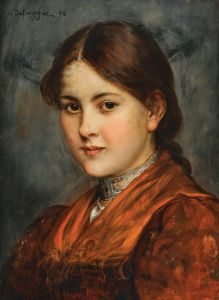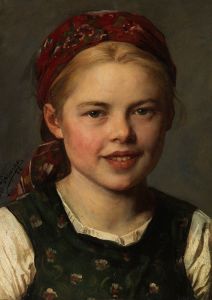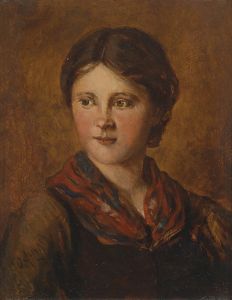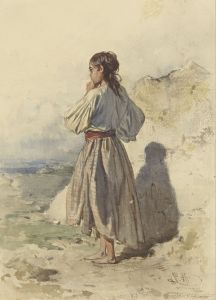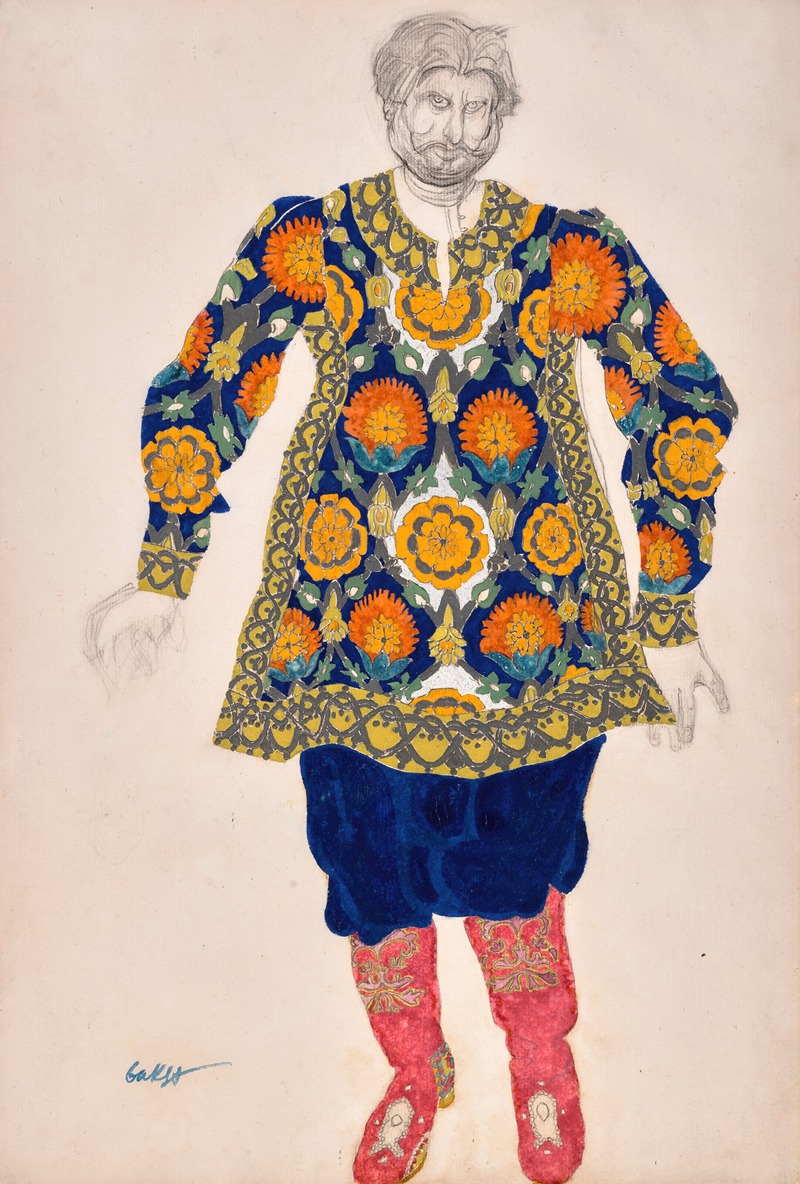
Costume design for ‘Sadko’; Man with embroidered shirt and red boots
A hand-painted replica of Léon Bakst’s masterpiece Costume design for ‘Sadko’; Man with embroidered shirt and red boots, meticulously crafted by professional artists to capture the true essence of the original. Each piece is created with museum-quality canvas and rare mineral pigments, carefully painted by experienced artists with delicate brushstrokes and rich, layered colors to perfectly recreate the texture of the original artwork. Unlike machine-printed reproductions, this hand-painted version brings the painting to life, infused with the artist’s emotions and skill in every stroke. Whether for personal collection or home decoration, it instantly elevates the artistic atmosphere of any space.
Léon Bakst, born Lev Samoilovich Rosenberg on May 10, 1866, in Grodno, Belarus, was a renowned Russian painter and scene and costume designer. He is best known for his work with the Ballets Russes, a famous itinerant ballet company based in Paris that performed between 1909 and 1929. Bakst's innovative and vibrant designs played a significant role in the company's success and left a lasting impact on the world of theater and fashion.
One of Bakst's notable works is the costume design for the character Sadko, specifically the "Man with embroidered shirt and red boots." This design was created for the opera "Sadko," composed by Nikolai Rimsky-Korsakov. The opera, which premiered in 1897, is based on a Russian folk tale about Sadko, a gusli player and adventurer from Novgorod. The story follows Sadko's journey to the underwater kingdom of the Sea Tsar and his eventual return to the human world.
Bakst's costume design for Sadko is a striking example of his ability to blend traditional Russian motifs with modernist aesthetics. The "Man with embroidered shirt and red boots" costume features a richly decorated shirt with intricate embroidery, reflecting the opulence and cultural heritage of Russia. The red boots add a bold and vibrant touch to the ensemble, highlighting Bakst's flair for color and attention to detail.
Bakst's work on "Sadko" is characterized by his use of vivid colors, elaborate patterns, and luxurious fabrics. His designs often drew inspiration from Russian folklore, Orientalism, and Art Nouveau, creating a unique and eclectic style that was both theatrical and avant-garde. Bakst's costumes were not only visually stunning but also meticulously crafted to enhance the performers' movements and bring the characters to life on stage.
In addition to his work on "Sadko," Bakst collaborated with other prominent artists and composers of his time, including Sergei Diaghilev, Igor Stravinsky, and Vaslav Nijinsky. His contributions to productions such as "The Firebird," "Scheherazade," and "The Sleeping Beauty" further cemented his reputation as a master of costume and set design.
Bakst's influence extended beyond the theater, as his designs also impacted the fashion world. His bold use of color and pattern inspired many contemporary designers and helped pave the way for the modernist movement in fashion. Bakst's work remains highly regarded and continues to be studied and admired by artists, designers, and historians alike.
Léon Bakst passed away on December 27, 1924, in Paris, France. His legacy lives on through his groundbreaking contributions to the arts, particularly in the realms of costume and set design. The costume design for "Sadko," with its embroidered shirt and red boots, stands as a testament to Bakst's artistic vision and his ability to merge tradition with innovation, creating timeless works of art that continue to captivate audiences today.





